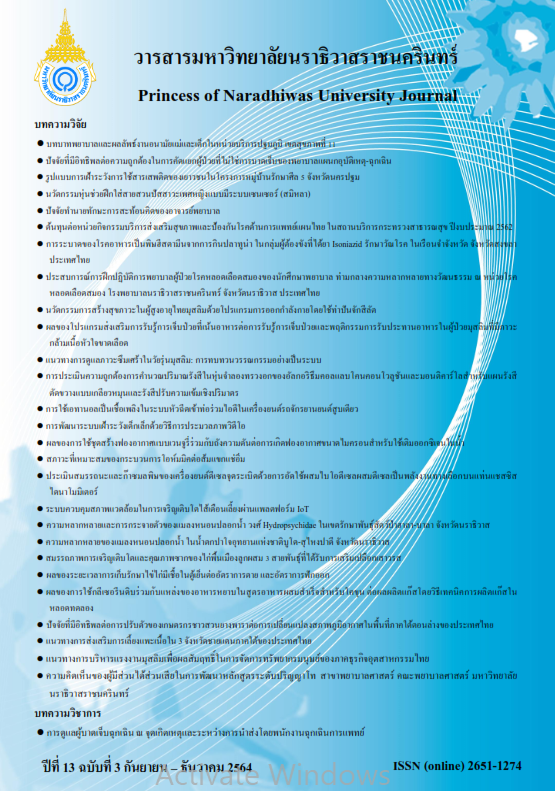The The System Controls Environment of Earthworm with IoT Platform
Keywords:
Automatic controller system, Worm feeding, NodeMCU ESP8266, Internet of ThingsAbstract
This research is proposed the developing the system controls environment of earthworm that is controlled by smartphone. Because the original earthworm feeding is the watering prediction that sometimes the environment is unsuitable for earthworm feeding. The objective of the research is to design and develop an automatic watering system both automatic and manual. The watering system can be adjusted according to soil moisture for automatic controller. The system consists of hardware and mobile application. In case of hardware, the process is divided into three parts. Firstly, the nodeMCU ESP8266 receives the soil moisture and pH values that can be measured by the sensor. After that, these data are implemented according to the specified conditions to optimize the suitable soil moisture. Finally, nodeMCU ESP8266 control the operation of the relay to switch on and off the solenoid valve and pump. In terms of application, Blynk is mainly used to monitor the measured pH and moisture values in real-time. Moreover, user can select the function of operation system including automatic and manual modes. The system was implemented and tested in earthworm feeding farm at Yi-ngo District, Narathiwat Province, Thailand. The results showed the proposed earthworm feeding is better than the original feeding. The moisture of soil was maintained so that the average earthworm growth increased by 30 percent from the previous model, The production cost was reduced due to the use of water and rate of water use in the care was reduced by 70 percent from the previous model. The amount of fertilizer per production unit increased by 30 percent and system management is also easier.
References
Amnat, C. (2017). A guide to disseminating and publicizing earthworm farming for Dispose of organic waste in the household. Ministry of Natural Resources and Environment. (in Thai).
Boonchamni, C., & Iwai, C.B. (2019). Evaluation of yield and growth of microgreen under different growing media. In: Proceedings of the 6th National Soil and Fertilizer Conference (NSFC 2019), 3-5 July 2019. Nakhon Pathom. (in Thai).
Champar-ngam, N. (2017). Vermicompost Technology for Sustainable Agriculture. Eau Heritage Journal Science and Technology, 11(2), 70-81.
Elijah, O. (2018). An Overview of Internet of Things (IoT) and Data Analytics in Agriculture: Benefits and Challenges. IEEE Internet of Things Journal, 5(5), 3758-3773.
Hashim, N. (2015). Agriculture monitoring system: a study. Journal Teknologi, 77, 53-59.
Jai-aree, A. (2018). Guidelines to promote organic agriculture to food security and safety for community: reflection from the operating sector. Silpakorn University Journal, 38(5), 1-17.
Maejo University Phrae Campus. (2015). Science and technology village. Composting village.
Muangprathub, J. (2019). IoT and agriculture data analysis for smart farm. Computers and Electronics in Agriculture, 156, 467-474.
Piyanusorn, P., & Sutajaidee, W.A. (2012) Study of Farming Earthworms commercial with Organic Waste. Suan Sunandha Rajabhat University. (in Thai).
Tancho, A. (2005). Earthworm manure production techniques. National Science and Technology Development Agency.




